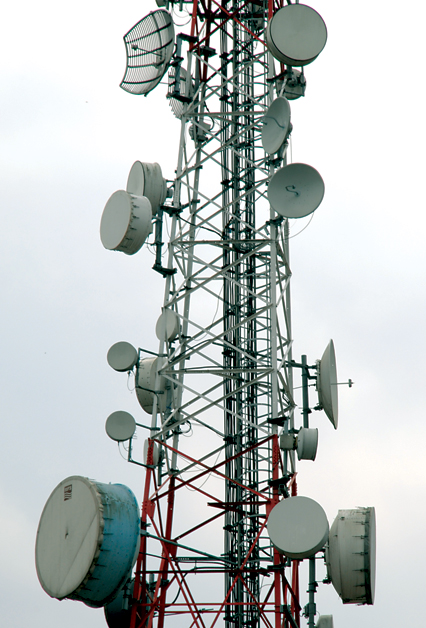Are you still using that old dial-up service and missing out on all the new internet fun: like putting your baby videos on YouTube or having a video chat with your cousin inAmerica? Then you need to seriously upgrade. But to what? This is a quick guide to get you up and online in 2008 style.
 Let’s first break it down into types of connections and service plan options. If you start mixing them up you will be as confused as I was after reading all the ISP brochures from the 13 or so providers in the Valley today. There are basically 4 types of services available that will get you into a higher gear on the Internet:
Let’s first break it down into types of connections and service plan options. If you start mixing them up you will be as confused as I was after reading all the ISP brochures from the 13 or so providers in the Valley today. There are basically 4 types of services available that will get you into a higher gear on the Internet:
ISDN Leased Line
Broadband Cable or Wireless
Wi-Fi
An ISDN connection modifies your standard phone line with what techies call an “ISDN modem” which is used at both ends of your existing phone line, one in your home and other at your ISP’s house. Essentially you make a call to the Internet over your modified line and are connected to the Internet via your ISP, and charged by the hour or by the month for unlimited access. Connection speed options range from 64 KBps to 256 KBps and beyond. With a 256 KBps line you can watch reruns of Bay Watch streamed to you from www.badtv.com.
This technology is old and requires that you connect and maintain an ISDN Modem that is attached to your computer, and depending on your computer, this idea may be doomed to failure, unless you are a computer technician with loads of free time. Not recommended for the meek, but for the geek.
A leased line is the superman connection to the world of high-speed downloads, gaming, and video streaming, and is your own private tapping into the web. This line requires special installation and gives you 24x7 access at the highest speeds known to man or women kind. For the rich and famous or those that want to impress by having a houseful of computers all getting internet feeds of Charlie’s Angles and Bay Watch at the same time. Connection speed options range from 64KBps to 8192 KBps, that with super speed costing over Rs. 600,000 per month.
A broadband cable or wireless connection is high-speed Internet for the masses. Using either a cable or wireless receiver, your ISP will pump the latest Britney Speers news or Itunes selection into your home at a fraction the cost of a leased line. Speeds here range from the moderate 64 KBps to 128 KBps, almost good enough to watch YouTube without choking. Comes in two flavors: wired and not. Both connections work the same; it’s just a matter of how the Internet data gets to and from your ISP and your computer: over a myriad of cable lines and telephone boxes, or through the airwaves. Which is better? Both are equal, as long as it works.
New in Nepal are Wi-Fi connections, and brought to you by an unlikely source of innovation: NTC. This service requires that you plug in a wireless-receiver (a USB dongle) into your computer or laptop and you are now set to go, anywhere within range of a NTC mobile phone tower. Sounds ideal, yes? The downside is that 24x7 service is not offered and payment is by recharging your account, as well as this thought: how often does your NTC mobile connect hassle-free? Speeds for this service range from 64KBs to 256 KBps, if you can get a signal.
To sum up, here is what you can expect depending on what you want from these technologies: Well, now that we have plowed through all the technical gorp, on to which service plan to choose: here is a rundown of the types of plans available through Katmandu’s various ISPs, without the marketing hype you’ll get in their confusing marketing brochures and on incoherent websites:
Hourly plans allow you to pay by the hour or by the time of day much like your pre-paid mobile service. You use it till you run out, and then go pay for more. If you are in the middle of a game or a download, this will surely be frustrating and turn you off to the plan quickly. Another variation on this theme that may work better is unlimited “night surfing,” where your access is limited to evening hours (after 6 pm, and before 8 am). That’s great for night people, but if you are a day person you are left hanging in the sun to dry. But a few valley ISPs offer “day surfing” for you day people, or businesses that only need access during the workday.
Megabyte plans limit bits and bytes downloaded and uploaded— not the time of day. But how much do you download and upload a month? More importantly, do you really want to care about something as silly as that with all the other things you have to track in your life? Avoid this type of plan at all costs, or it will cost you a bundle just to watch a movie online.
The only type of plan that makes sense in today’s world of cool internet things to do are unlimited plans; you are charged not by megabyte nor time but by speed. But which speed to choose? As fast as you can afford! Almost all KTM ISPs have speeds for all budgets, but anything less then 64 KBps and you might as well go back to that old dial-up service. Speeds such as 84 or 96 or 128 KBps will usually give you enough oomph to have fun or get some serious work done on the net.
So from our roundup of connection options and service plans, we found that a 64-96 KBps broadband cable connection is the cheapest service with the lowest monthly and installation fees. But there is one more thing to consider. Service and support, as you are in the realm of geekdom. Rule of thumb for Internet support from our ISPs: expect none, and be pleasantly surprised with a little. For example, with my own ISP— Worldlink—I have found that they have a knowledgeable support staff with a 24x7 hotline (two things to look for in an ISP), and yet I still suffer countless hours of unexplained outages. From sunspots to dead cable box batteries, so many things can go wrong here in Nepal. That’s why when it comes to high-speed surfing, patience is still worth more then gold, no matter how well you are connected.
When not writing about tech and design in the blog-o-sphere of the internet, Jiggy Gaton operates Phoenix Studios Nepal, an audio/visual recording studio catering to local and Expat musicians as well as to local and international businesses and NGOs. See http://www.phoenixstudios.com.np for more information.











